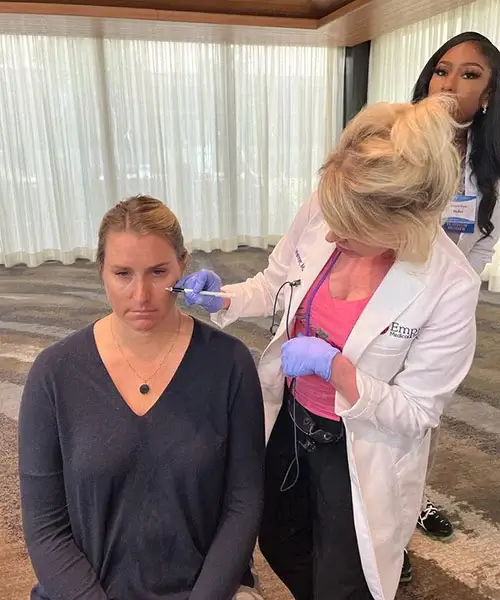What Is a Nonsurgical Facelift?
By Dr. Stephen Cosentino
PRESIDENT OF EMPIRE MEDICAL TRAINING
You’re getting fed up with the loose skin, deepening lines, spreading wrinkles, and generally tired appearance you see every time you look in the mirror. But you’re not sure you want to go through with expensive, risky plastic surgery.
Good news: You don’t have to. At least, not yet. You should first consider your nonsurgical facelift options.
What Is a Nonsurgical Facelift?
A nonsurgical facelift is a minimally invasive procedure that has similar results to traditional plastic surgery. A nonsurgical facelift also has fewer side effects, a shorter recovery time, and lower cost than a rhytidectomy — the technical name for a surgical facelift.
Nonsurgical facelifts have some important limitations though. Most importantly, their results are temporary. Depending on the treatment type, results last anywhere from three or four months to perhaps two years.
Nonsurgical facelift procedures aren’t as effective in correcting or masking serious aesthetic complaints, like very deep facial creases or widespread sagging skin. In these cases, traditional surgery may be the better option.
Risk Profile vs. Surgical Facelift
Nonsurgical facelifts are less risky than surgical facelifts. This is because they don’t require general anesthesia, which is inherently risky, and don’t involve deep incisions, which take longer to heal and are more likely to get infected.
Cost vs. Surgical Facelift
Nonsurgical facelifts cost much less than surgical facelifts. Reasons for this include:
- They often don’t need to be performed by board-certified plastic surgeons
- They don’t require overnight hospital stays or operating suites
- They require fewer support staff to assist with the procedure
- They have shorter recovery times and less post-procedure follow-up
The actual difference depends on the type of nonsurgical procedure, the number of treatment sessions required, and where the procedure is performed.
What Are the Most Popular Types of Nonsurgical Facelift?
These are the three most popular types of nonsurgical facelift. Ask your aesthetic medicine provider about other options, like fat injections.
Thread Lift
This skin tightening procedure is ideal for patients with loose skin in the cheeks, chin, and eye/forehead areas. Also known as a PDO thread lift or barbed thread lift (for the type of medical thread used), the procedure helps stimulate collagen and elastin production while tightening the treated areas. The added collagen and elastin restore lost volume over the course of a few months, with effects lasting a year or two.
Neuromodulator Injection
“Neuromodulator” is a less scary word for “botulinum toxin.” Led by Botox®, this class of drugs quiets overactive muscles that cause fine lines across the face. The results don’t last as long as a thread lift’s, but the procedure is even simpler and has relatively low incidence of side effects.
Dermal Filler Injection
Also known as soft tissue fillers, dermal fillers directly restore volume to sagging or hollow areas of the face. The most common type is hyaluronic acid; others include calcium hydroxylapatite and PMMA. Depending on the filler type, results last anywhere from six months to several years.
Like neuromodulator and thread lift procedures, dermal filler injections have low side effect risk. But it’s still best to work with a provider who has completed an accredited dermal filler training course.


